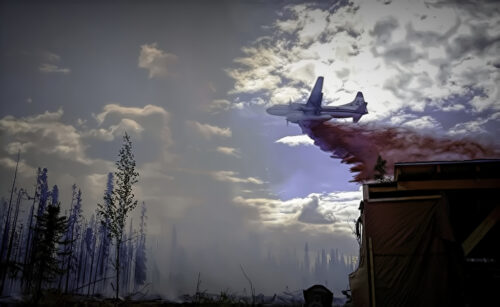Image courtesy of JLS Photography Alaska via Flickr
Amidst a fire-ravaged landscape, a bright pink substance stands out: Phos-Chek WD-881. Typically dispensed aerially, Phos-Chek slows combustion by altering plants’ carbon-containing molecules, making them non-flammable.
When every minute counts during wildfires, Phos-Chek provides immediate relief and has thus been—and continues to be—the default solution. Fire retardants like Phos-Chek are more effective and longer-lasting than water, granting firefighters valuable time to combat flames on the ground.
Despite its effectiveness, concerns have emerged over Phos-Chek’s environmental impact. The chemical contains trace metals, including cadmium and chromium, which pose risks to ecosystems and aquatic life. Though some regulations prohibit its use near bodies of water, runoff can still reach waterways, disrupting ecosystems by causing nutrient imbalances and harmful algae blooms. Additionally, exposure to airborne Phos-Chek particles can irritate the human respiratory system, raising health concerns for both firefighters and nearby residents.
In spite of these issues, Phos-Chek remains central to wildfire management. Many alternatives, including controlled burns and fire-resistant vegetation, focus on prevention rather than active suppression, making Phos-Chek indispensable in emergencies. Furthermore, firefighting infrastructure, including aircraft and storage facilities, is built around chemical retardants such as Phos-Chek. The main company that produces these retardants lobbies extensively to influence wildfire policy, making a transition away from Phos-Chek politically difficult.
Nevertheless, through careful application and stricter limitations of use near water sources, Phos-Chek’s risks can be minimized while maintaining its fire suppression benefits. As wildfires become more frequent and intense, refining these strategies will be critical to balancing environmental responsibility with effective firefighting.

